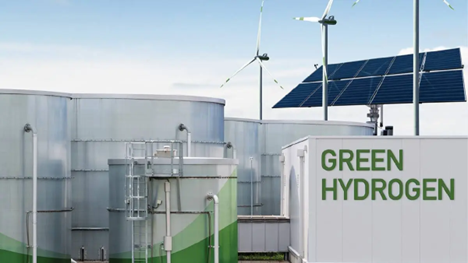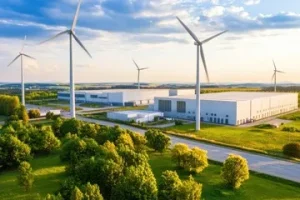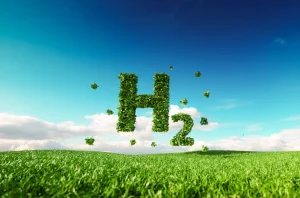Green Hydrogen Plants: The Key to a Cleaner Tomorrow or Just Hype?
Green Hydrogen Plants: Benefits and Challenges
What is Green Hydrogen Plant and Why Should You Care?
A Green Hydrogen Plant is a cutting-edge facility designed to produce hydrogen fuel by splitting water into hydrogen and oxygen using electricity generated exclusively from renewable sources like solar or wind. What makes these plants unique is their integration of advanced electrolyzer technologies—such as Alkaline or PEM (Proton Exchange Membrane) systems—paired with smart control centers and data analytics platforms that optimize production based on real-time energy availability and demand These plants not only yield high-purity hydrogen but also generate oxygen as a valuable byproduct, both of which can be used for industrial applications or energy storage, and contribute directly to reducing carbon emissions by replacing fossil-based processes. Modern green hydrogen plants are modular, scalable, and incorporate both active and passive safety systems, ensuring reliable operation while supporting the global shift toward carbon neutrality.

If you are a policymaker, investor, industrialist, or just someone who cares about the planet and power bills—this blog is for you. We will uncover how green hydrogen plants can solve real-world energy problems, their benefits, challenges, and what it takes to turn hype into a sustainable revolution.
Here’s why it’s gaining traction:
Hydrogen holds the highest energy content per unit weight of any fuel.
It’s versatile—used in power generation, transport, industry, even green ammonia production.
It plays well with renewables, solving issues around energy storage and grid balancing.
5 Big Benefits of Green Hydrogen Plants
1. A Giant Leap in the Energy Transition
Let’s face it: fossil fuels are on borrowed time.
Green hydrogen plants are making bold moves in the energy transition, replacing coal and gas in hard-to-abate sectors like steelmaking, aviation, and shipping. In fact, the IEA estimates green hydrogen could cut 6 billion tonnes of CO₂ per year by 2050.
Want to slash carbon emissions in industries where electrification falls short? Hydrogen could be your golden ticket.
2. Massive Reduction in Greenhouse Gas Emissions
Traditional hydrogen production emits around 830 million tonnes of CO₂ annually—that’s more than Germany’s total emissions!
With green hydrogen production, we are looking at nearly zero direct emissions. This makes hydrogen plants critical infrastructure in the fight against climate change.
Every tonne of green hydrogen produced offsets emissions that would’ve otherwise come from natural gas-based hydrogen.
3. Unlocking Clean Energy Storage Like Never Before
Renewables are powerful, but unpredictable. What happens when the sun doesn’t shine or the wind doesn’t blow?
Green hydrogen answers that with long-duration energy storage capabilities. Excess solar or wind power can be stored as hydrogen—then converted back to electricity or used in fuel cells when needed.
Think of it as a battery with a mega memory.
4. Enabling Large-Scale, Decentralised Power Generation
Unlike fossil-fuel plants that centralise power production, hydrogen facilities can be built at various scales—rural, urban, even offshore.
This opens doors to large-scale green hydrogen projects, improving energy access in remote regions, reducing transmission losses, and boosting energy independence.
Suddenly, regions previously dependent on fuel imports can become clean energy exporters.
5. Fuel for Innovation & Economic Growth
Green hydrogen isn’t just a climate solution—it’s a massive economic opportunity. From R&D to infrastructure, jobs in green hydrogen plants are already on the rise. According to PwC, by 2050 the global hydrogen economy could be worth $2.5 trillion, supporting over 30 million jobs.
Governments and businesses are investing in hydrogen storage, production methods, and new tech to drive costs down and performance up.
What’s Holding Us Back? The Top Challenges in Green Hydrogen Production
Now, let’s address the elephant in the room—the hurdles. Because let’s be real: every innovation faces its test.
1. Cost and Efficiency
Producing green hydrogen is still 2–3 times more expensive than grey hydrogen. Electrolysers are costly, and large-scale implementation is capital intensive.
But there’s a silver lining: costs are falling 30–50% per decade, and mass production is closing the gap.
2. Infrastructure Gaps
Hydrogen pipelines, storage systems, fuelling stations—it’s all still catching up. Without robust infrastructure, adoption remains patchy.
3. Energy Intensity
Electrolysis uses a lot of power. So the key question is: Are we ready to dedicate that much renewable electricity to hydrogen? If not planned wisely, we risk competing with domestic and industrial energy needs.
4. Safety Perceptions
Hydrogen is highly flammable. While modern hydrogen facilities follow strict safety protocols, public perception needs education and trust-building.
5. Lack of Standardisation
From production methods to transport and usage, standard frameworks are still evolving. This slows down cross-border projects and global scalability.
Solving the Puzzle: The Role of Research & Development
One word: innovation.
Ongoing research and development in electrolysers, catalysts, smart grids, and hydrogen-based fuels like green ammonia is unlocking new potential.
The goal?
Bring costs down
Boost efficiency
Maximise sustainability
Enable scalable green hydrogen production across geographies
Collaborations between governments, startups, and energy giants are key to accelerating this shift.
Conclusion: So, Is Green Hydrogen Worth the Hype?
Absolutely—but only if we scale fast, smart, and sustainably.
That’s where YonderH2 steps in.
At YonderH2, we are not just building hydrogen plants—we are creating future-ready energy ecosystems. From feasibility studies and plant construction to hydrogen storage, distribution, and safety protocols, we handle it all. Backed by cutting-edge R&D and a global partner network, YonderH2 delivers solutions designed to decarbonise, decentralise, and democratise power.
Ready to Power Up the Future?
Whether you are planning your first green hydrogen project or looking to upgrade an existing power generation facility—we have got your back.
Partner with YonderH2 and let’s fuel tomorrow—cleaner, greener, and bolder.
Contact us today to explore how green hydrogen can revolutionise your energy game.
Green hydrogen is poised to be the backbone of global sustainable power, and India is already preparing to become a leading player in the game. India is making concerted efforts to create green hydrogen plants all over the country as it asserts its resolve to cut emissions and ensure energy self-reliance.

However, as impressive as the promises of green hydrogen are, there are significant hurdles to mass usage.
Advantages of a green hydrogen plant
Green hydrogen is made via water electrolysis using renewable power such as wind and solar power. It does not release greenhouse gases, offering a clean alternative to fossil fuels and significantly mitigating climate change.
Energy Security and Autonomy: Green hydrogen investment can decrease India’s dependence on imported fossil fuels, thereby increasing national-level energy security. The domestic availability of renewable power for hydrogen production can create an independent energy system.
Job opportunities and economic growth: Green hydrogen plants are generating research and development, construction, and manufacturing jobs and spurring economic growth through investments.
Green hydrogen is used as clean feedstock for steel, cement, and chemical production, effectively decarbonizing otherwise hard-to-abate sources.
Green hydrogen is not only used in industrial capacity but also in transportation, power generation, and energy storage, demonstrating its versatility in varied uses.
Challenges
High Production Costs: Green hydrogen is currently more expensive to produce than conventional means owing to the cost of electrolysers and renewable power installations. Both scale economy and technological advancements are required for cost equivalence.
Infrastructure Development: Developing an overall infrastructure for the generation, storage, and supply of green hydrogen involves considerable investment in planning and coordination. Insufficient preexisting infrastructure is a challenge for rapid implementation.
Water Resource Management: Electrolysis is significantly dependent on water supply; thus, there are concerns where water is scarce. Sustainable water management would be necessary to avoid local water issues through green hydrogen production.
Technological maturity: While developments are in progress, certain green hydrogen production and utilization technologies are still in development. Research and development are necessary for ongoing work to enhance efficiency and reliability.
A supportive policy environment with established regulations, incentives, and standards is essential to facilitate investment and guide the growth of the green hydrogen economy.
Initiatives of India and the Future
Identifying challenges as well as opportunities, the Indian government has launched the National Green Hydrogen Mission to transform India into an international green hydrogen-producing as well as an exporting country. It includes sizeable fiscal incentives for creating and making supporting infrastructure. In addition, public-private partnerships are driving innovation, and green hydrogen technology implementation is at a record rate. The journey towards establishing India’s green hydrogen plant chain is full of challenges and opportunities. Though economic growth, energy independence, and environmental sustainability are strong drivers for action, cost, technology, and the need for infrastructure are challenges that must be overcome.
India can overcome obstacles with intelligent policy, support, and collaboration. One of India’s leading green hydrogen company in India, Yonder, plays an essential role in the global green economy.
Contact us now.





